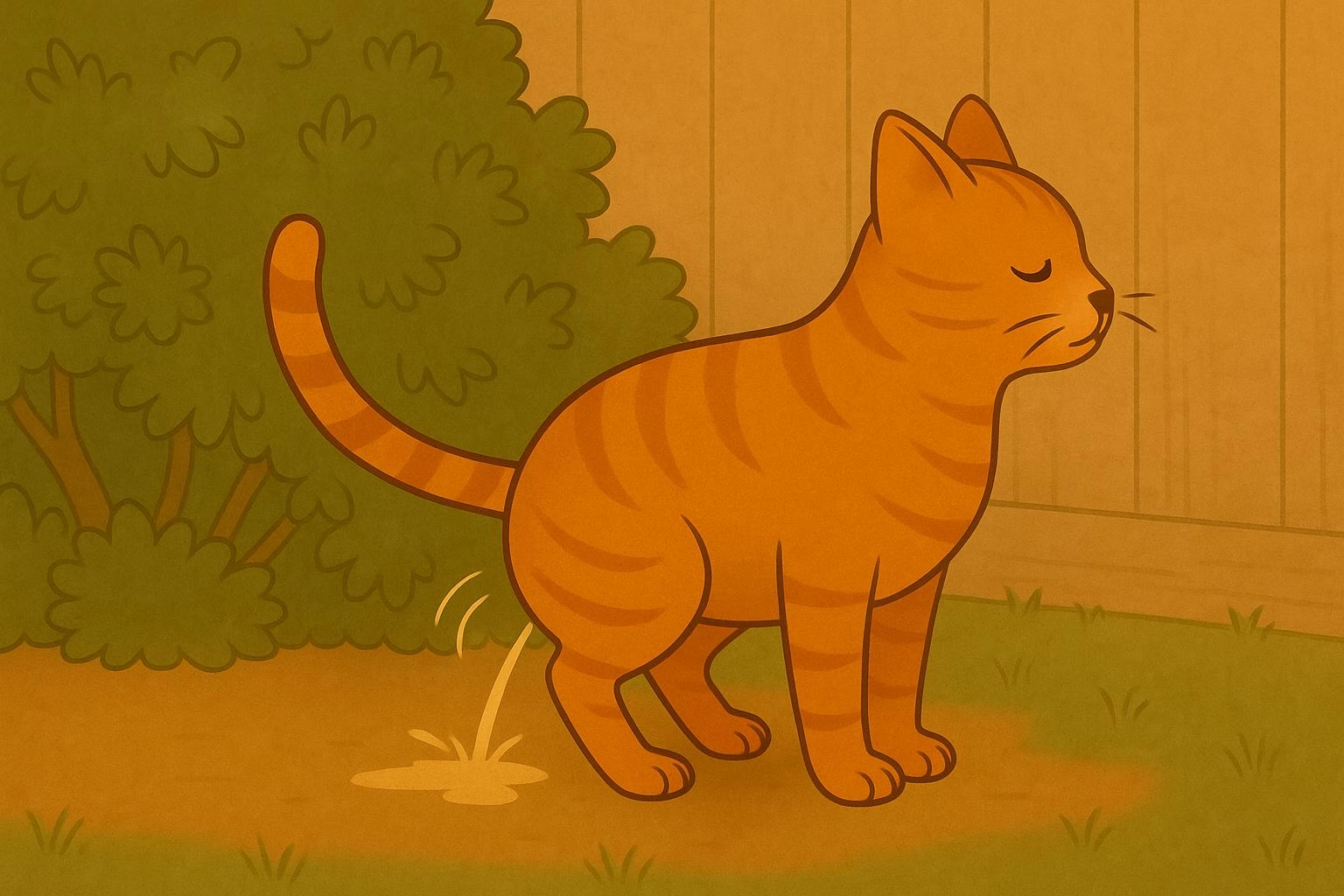Cat bathroom habits are usually pretty straightforward, but sometimes they come with a flourish. If you have noticed your cat’s tail quivering while he urinates, you are not alone. It can look intense or even alarming, but in most cases, it is part of normal feline behavior. Let’s look at why the tail joins the routine and what it might be saying.
Dear Tabby 🐾
“I noticed something odd about my cat. When he pees, his tail shakes or quivers for a few seconds. It looks intentional, not just a random twitch. Is this normal? Is it something medical or just a cat thing?”
— Kevin D., Atlanta
Tabby Replies 🐱
A shaking tail during peeing might look a little dramatic, but it is often a completely natural behavior. In fact, it can tell you a lot about your cat’s mood, his confidence, and sometimes his health. Like most things feline, the answer depends on the context.
Let’s explore what is going on back there when your cat visits the litter box or a favorite outdoor spot.
🚻 Classic Spraying Behavior
One common reason for a tail shake during urination is that your cat is not really peeing in the usual way, he is spraying.
Spraying is a type of scent marking often seen in unneutered males, though neutered cats may still do it occasionally. It involves backing up to a vertical surface, lifting the tail, and delivering a quick, deliberate squirt while the tail twitches or quivers.
Even if he is neutered, the motion may linger as a reflex or as a show of social presence in the environment.
🐾 Scent Glands in Motion
Cats have scent glands beneath the base of their tails. When your cat’s tail quivers while peeing, it may be part of a combined marking ritual.
This behavior says, “I was here,” both chemically and physically. It is more common in outdoor cats or indoor cats who feel the need to reinforce boundaries with other pets.
The tail motion enhances the signal, helping the scent linger just a bit longer.
😺 A Sign of Comfort and Control
In some cases, a tail shake while peeing simply means your cat feels safe and confident in his environment.
He is not hiding. He is not rushing. He is handling his business with style. Cats that feel secure often show more full-body behavior during basic routines, including stretching, tail movement, and even vocalization.
So if your cat does this consistently and seems otherwise healthy, consider it his signature flourish.
❗ When It Might Signal a Problem
There are times when a shaking tail might be linked to discomfort or pain, especially if paired with:
- Straining
- Crying during urination
- Peeing in small amounts or frequent attempts
- Litter box avoidance
- Excessive licking of the genitals
These signs could point to a urinary tract infection, inflammation, or even crystals. If the tail shake looks more like a tension response than a confident wiggle, check in with your vet.
Tabby’s Final Word 🧶
Your cat’s tail is always saying something. When it shakes during peeing, it could be a confident signature move, a scent-marking gesture, or a sign that something needs attention.
The best way to tell the difference is to watch the whole routine. If your cat struts away and resumes his day, there is probably nothing to worry about. But if the tail shake seems stiff, distressed, or linked to changes in behavior, a vet visit is a wise next step.
Either way, you are not just observing a habit. You are witnessing communication: quiet, tail-based, and entirely feline.

